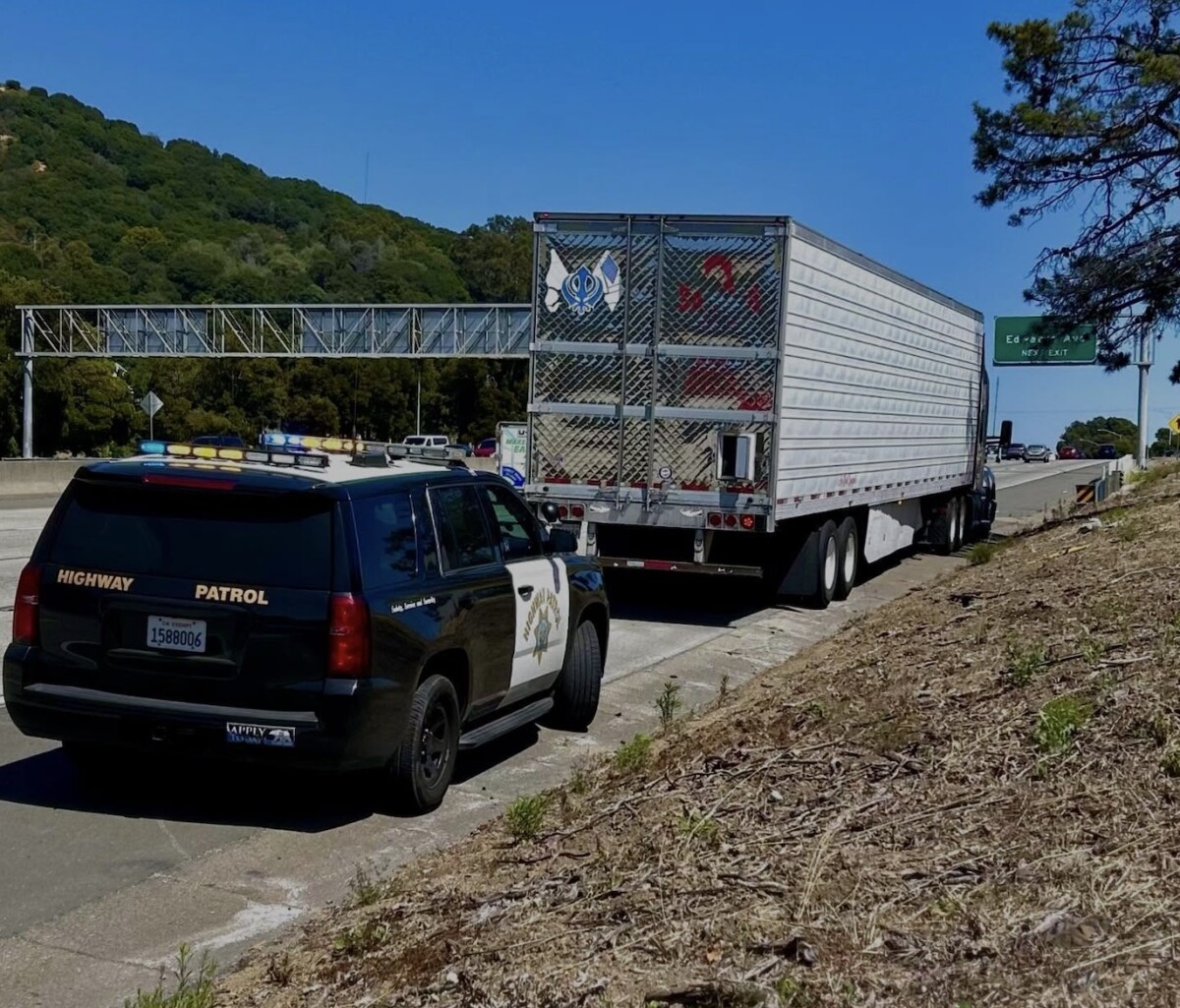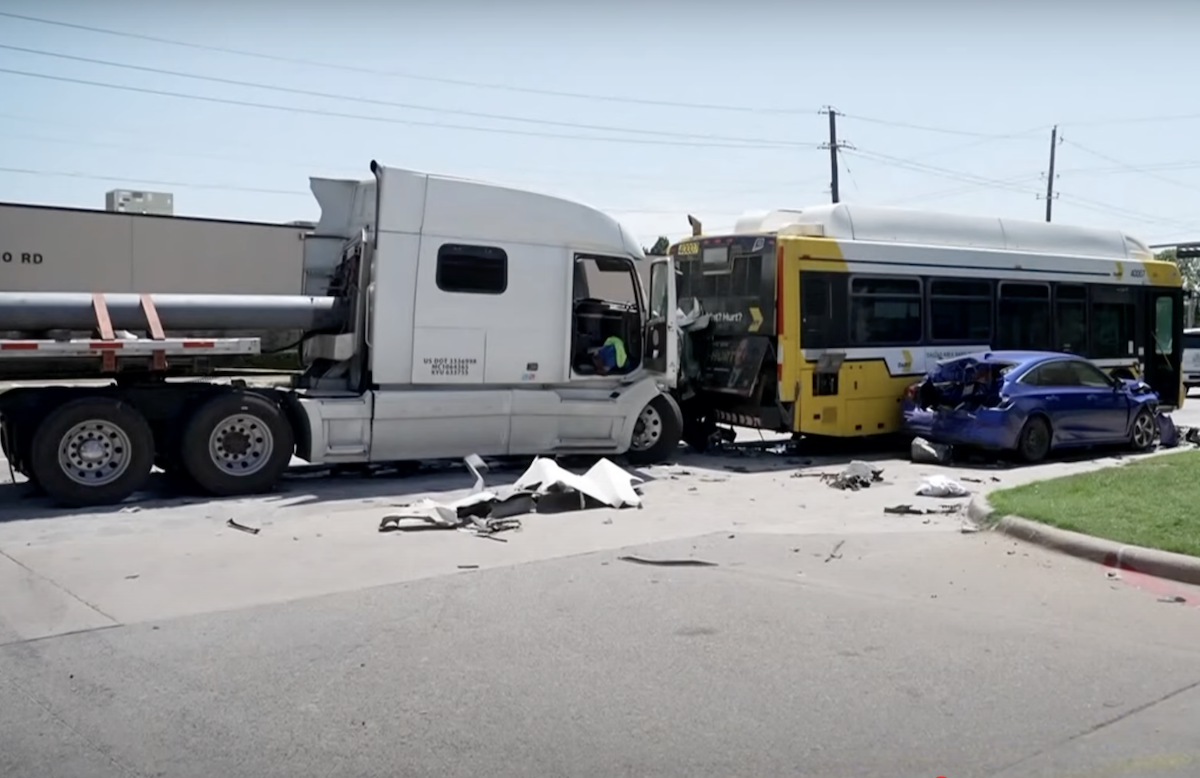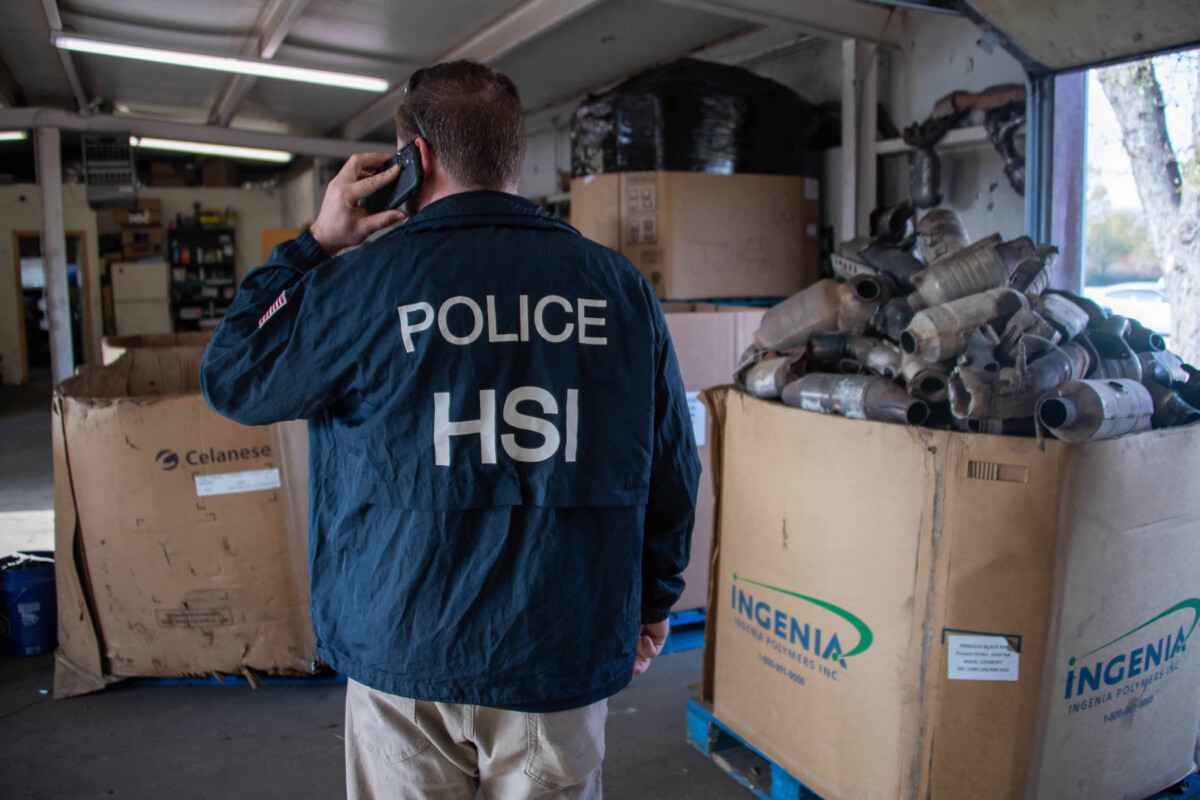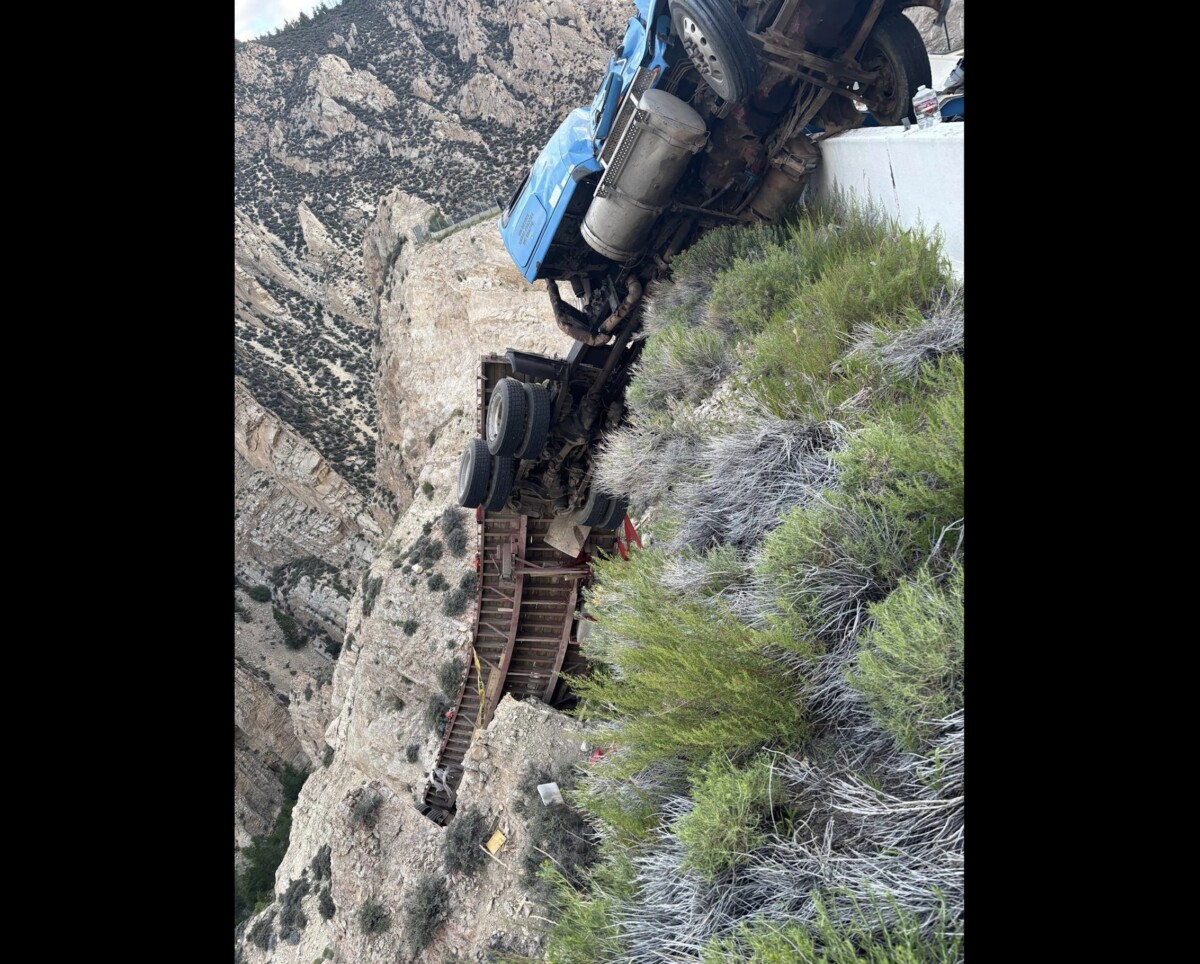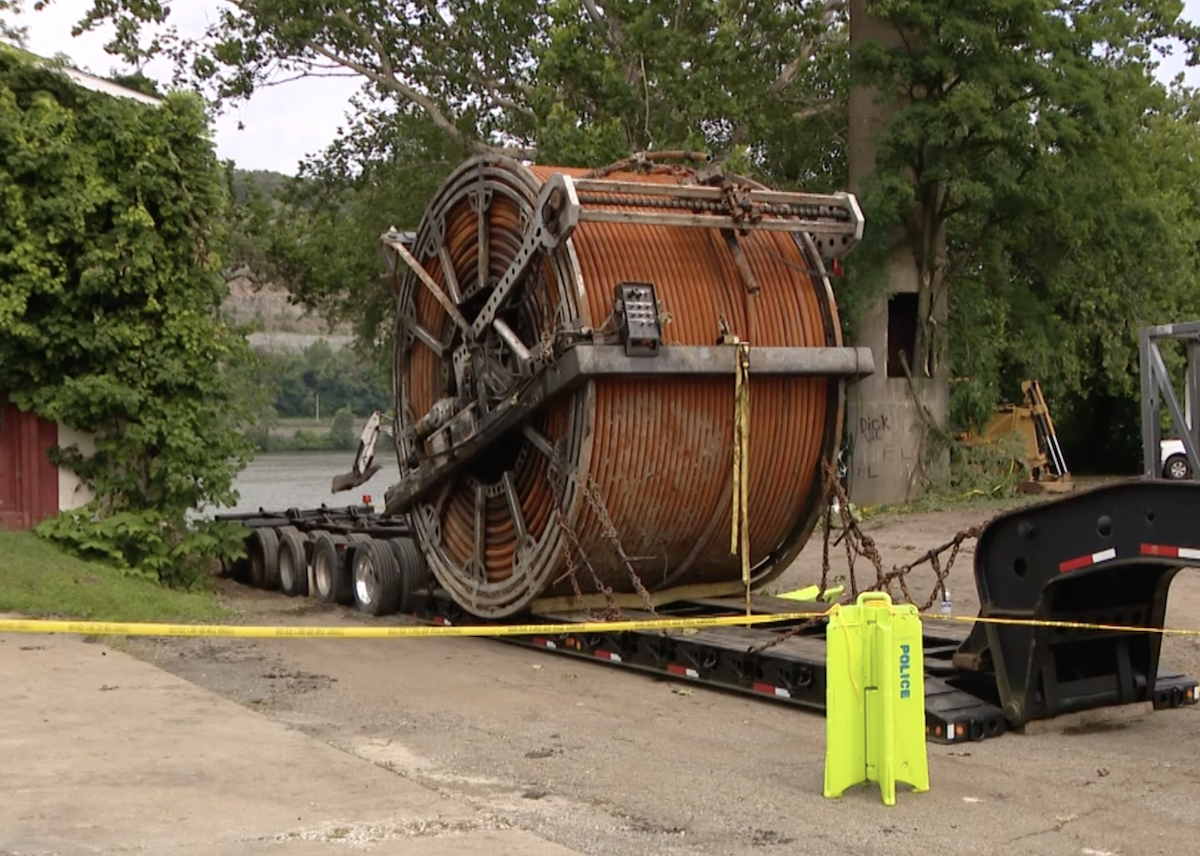The California Highway Patrol (CHP) is reminding truckers to steer clear of a portion of I-580 in Oakland under long-standing state law.
On July 8, CHP’s Oakland Division issued a statement reminding truckers that they aren’t allowed on I-580.
“Commercial big rigs are generally prohibited on I-580 between Grand Avenue and the San Leandro border; specifically from Exit 21B (Grand Ave/Lakeshore Ave) to Exit 30 (MacArthur Blvd/Foothill Blvd). This restriction helps reduce traffic congestion, improve safety, and minimize noise in residential areas,” troopers said.
Commercial traffic is advised to take I-880 instead of I-580.
Since 2000, California Vehicle Code Section 35655.5. prohibits any vehicle with a gross weight over 9,000 pounds on this portion of I-580, though the truck ban dates back much further.
From Caltrans:
“I-580 is the only Interstate Freeway in the Bay Area not open to trucks. It is supposed to be part of the National Network, which requires that Surface Transportation Assistance Act (STAA) vehicles be allowed. According to the Federal Highway Administration, I-580 is exempt from the National Network under the “grandfather” provision, because the ban existed prior to January 6, 1983, the day the 1982 STAA became law.”
Caltrans outlined a complete history of the I-580 truck ban, which you can view below.
1951 – Truck traffic is prohibited on MacArthur Blvd.
1963 – Oakland City Ordinance #6789 passed June 13, 1963, amending Sections 205 and 206 of the Oakland Traffic Code. This ordinance prohibited vehicles exceeding 4.5 tons, except for passenger buses and stages. The ordinance included a provision placing the ban in effect until January 1, 1968, pending approval of the federal Bureau of Public Roads (now known as the Federal Highway Administration – “FHWA”) and the California Sate Department of Public Works, Division of Highways (now known as the Department of Transportation – “Caltrans”), unless repealed by the City Council of Oakland.
1963 – This ban was approved by Caltrans and FHWA when 580 was constructed (approximately 1962-1964), in part because there was a pre-existing truck prohibition in this corridor before the freeway was built. Secondary issues included a four percent grade which would add to congestion and noise. The ban was to continue until January 1, 1968.
1965 – The new segment of I-580 was completed and open to traffic.
1967 – The Cities of Oakland, Piedmont, and San Leandro, and the County of Alameda sent a request to then-Governor Reagan to renew the State’s approval of the truck ban.
1967 – The Department conducted an extensive study to verify that an alternate route, Routes 238 and 880, was available for use by trucks. The study concluded that, from a traffic engineering standpoint, there was no strong evidence either to retain or to terminate the truck ban. So the truck ban was retained. According to the report, two factors justified retaining the ban: (1) the longstanding ban of trucks in the area, and (2) no hardship or added cost would result in the diversion of “through” trucks at this location. The report recommended the approval of the truck ban be extended indefinitely. However, the Department intended to review the operations of the alternate routes, 238 and 880, periodically to determine the desirability of continuing the ban.
1968-1972 – This review occurred annually until 1972 when HQ Traffic informed the District that future reviews were unnecessary.
1982 – The federal Surface Transportation Assistance Act (STAA) passed, which transferred the authority over truck bans on the National Truck Network from Caltrans to the U.S. Department of Transportation (US DOT).
1990 – After the 1989 Loma Prieta earthquake, some trucks began using I-580 for emergency purposes and/or due to increased congestion on I-880. Oakland residents complained to their elected representatives. The California Highway Patrol increased enforcement of the ban.
1990 – The California Trucking Association (CTA) proposed to study lifting the ban as part of Caltrans District 4’s I-880 corridor study. Caltrans District 4 refused to add this study due to strong local opposition.
1996 – In December, the CTA requested that Caltrans perform the “periodic” review intended by the 1967 study.
1997 – Caltrans determined that a “reverse” truck ban would require the same steps as a truck ban, that is, local agency support (Cities of Oakland and San Leandro, and Alameda County); a traffic study to evaluate traffic, safety, noise, and air quality impacts; an environmental document; a public hearing; and also federal approval, because of the 1982 STAA re. truck bans on interstates.
1999 – Caltrans District 4 proposed to Caltrans HQ that the district initiate the study, and invite the City of Oakland, the Alameda Couty Congestion Management Agency (CMA), and the CTA to participate. They proposed that, if the study results were favorable towards lifting the ban, and IF the City of Oakland was not opposed based on the report data, then Caltrans would proceed to the California Transportation Commission (CTC). HQ concurred.
1999 – On May 11, the Oakland City Council passed Resolution No. 74985 affirming the prohibition of trucks on the I-580 Freeway in Oakland. On the same date, several members of the California legislature wrote to Caltrans requesting that they abandon the study proposal.
1999 – On June 30, Caltrans wrote to the City of Oakland that, as of this date, there are no plans or resources allocated to perform the study.
1999-2000 – On 2/18/99, the California Legislature introduced Assembly Bill 500 to place the I-580 truck ban into the California Vehicle Code (CVC). The bill was chaptered on 8/10/2000, and codified as CVC Section 35655.5.

